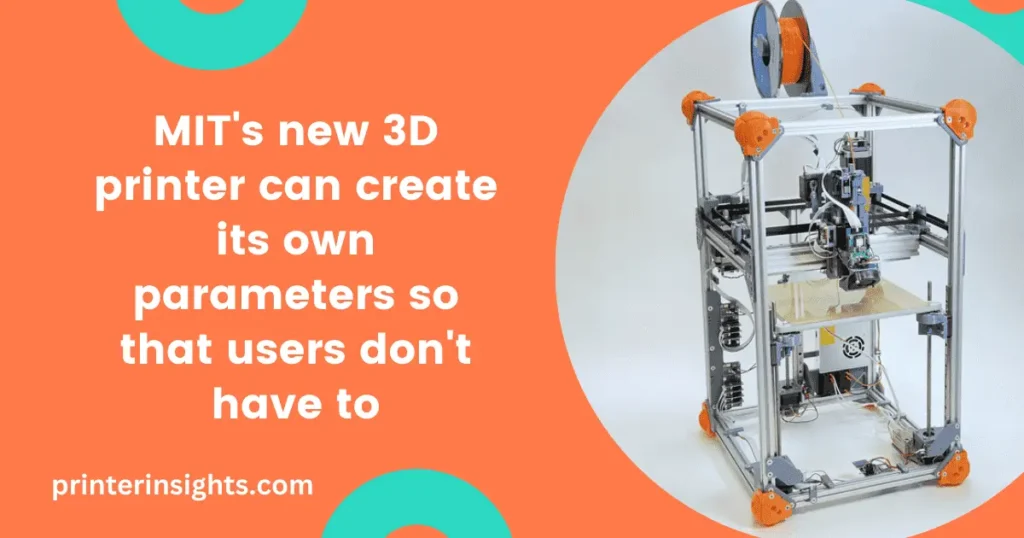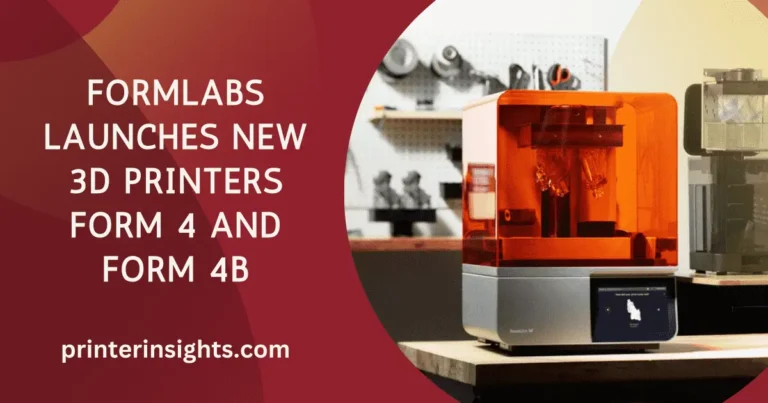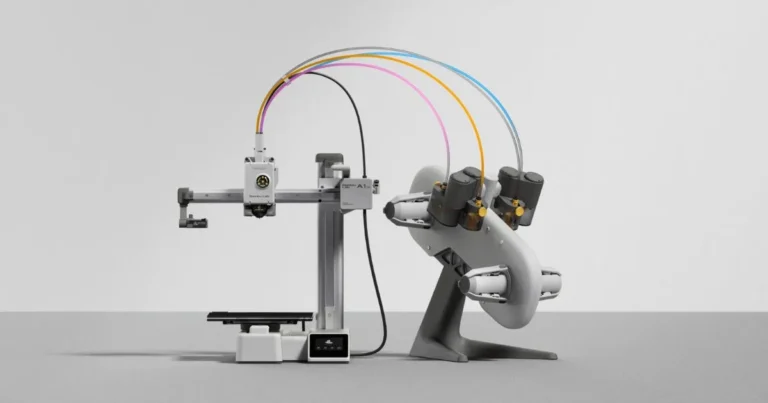MIT’s New 3D Printer Can Create its Own Parameters So That Users Don’t Have to
Discover MIT’s innovative 3D printer that sets its own rules for effortless printing. Simplifying user experience.

Key takeaways
- Autonomy and User-Friendliness: MIT’s latest 3D printer possesses the capability to autonomously establish printing parameters, eliminating the necessity for human modifications and enhancing the accessibility of 3D printing.
- Machine Learning Algorithm: The printer employs artificial intelligence to acquire knowledge from past print jobs, enhancing productivity and minimizing resource waste.
- Critical industry influence: This innovation can be used by other businesses, such as healthcare, cars, and education.
Examiners at the Massachusetts Institute of Technology (MIT) have made a gigantic breakthrough in 3D printing technology. They have made a dynamic 3D printer that can decide its operational parameters, making it less complex for people to utilize.
This cutting-edge printer automatically adapts settings such as velocity, resolution, and material distribution, enabling those with limited technical knowledge to produce prints of exceptional quality.
This development signifies a significant change in additive manufacturing, where the requirement for technical expertise has frequently acted as a hindrance for newcomers. Conventional 3D printers necessitate operators to manually modify numerous parameters according to the material and intricate specifications of the design. This method can be difficult and vulnerable to mistakes, particularly for novices. MIT’s latest advancement offers the potential to democratize the field of 3D printing, making it more available and user-friendly.
Related Posts: Formlabs’ Launches New 3d Printers Form 4 and Form 4b
Advancement in Technology
The core of MIT’s new printer lies in its sophisticated algorithm, based on a machine learning variant of artificial intelligence. The program examines an extensive database of 3D printing projects in order to derive insights from previous errors and achievements. By incorporating real-time feedback technologies, the printer can make immediate adjustments during the printing process. For example, if the print is not sticking well to the base, the printer can automatically adjust the temperature of the base or the speed of the print head.
This flexibility not only improves the overall quality of prints, but also greatly reduces material waste and operational expenses. Given the direct link between the accuracy of printing parameters and resource efficiency, the researchers at MIT suggest that this technology has the potential to foster more sustainable production processes.
The future holds real-world implementations and prospects
The employment opportunities for this state-of-the-art 3D printer are broad. The ability to reliably make parts with negligible setup time is highly valued in industries such as aerospace, cars, and healthcare, where exactness and fabric quality are essential.
Furthermore, this technology can enhance the creativity and productivity of designers and engineers by facilitating rapid concept iterations, free from the complexities of printer configurations.
From an educational standpoint, MIT’s innovation provides opportunities for schools and colleges, making the use of 3D printing as a teaching tool more practical. Students can prioritize design and engineering principles above the complexities of printer operation.
Related Posts: Formlabs says new 3D printer ‘rivals injection molding
Difficulties and Factors to Take into Account
While the benefits are clear, it’s important to consider the obstacles. The algorithm’s complexity necessitates regular updates and training with new data to effectively manage a wider variety of materials and printing situations. Additionally, the cost issue arises because modern technology such as this tends to be expensive, which could potentially restrict access for hobbyists and smaller educational institutions.
Furthermore, like any artificial intelligence-driven technology, there is a constant debate over the level of autonomy that machines should have. The evolution of technology may result in diminished responsibilities for human operators, thereby impacting employment opportunities in the manufacturing industry.
The Industry’s Reaction
The industry’s response has been predominantly favorable, with numerous experts commending MIT’s inventive strategy in addressing a longtime issue in 3D printing. Companies specializing in additive manufacturing are specifically interested in integrating this technology into their current products to improve performance and the user experience.
MIT intends to engage in partnerships with industry collaborators to further the technology and investigate potential options for commercialization. The objective is to commercialize this technique in the coming years, perhaps revolutionizing the field of 3D printing.
Related Posts: Formlabs’ New Pro 3D Printers Claim 2–5x Speed By Ditching Lasers For An LCD Screen
Summary
MIT’s most recent 3D printer isn’t as amazing a mechanical accomplishment, but it has the potential to revolutionize our viewpoints on generation, planning, and instruction. MIT is simplifying one of the most complicated components of 3D printing, which can empower people to convert their concepts into substantial objects without requiring ability within the details of 3D printing.
The distinguishing feature of MIT’s printer is its capacity to autonomously ascertain and modify its operational parameters. This feature enables users to avoid the need for in-depth knowledge of material density, print speed, temperature settings, and other factors that require careful management to ensure a successful print. MIT’s technology eliminates the need for specialist knowledge, thereby making the 3D printing process accessible to a wider range of people and democratizing it. This has a significant impact on educational environments because students can now concentrate on the imaginative and hands-on aspects of their designs rather than the technical details of the equipment.
Last Updated on April 27, 2024 by Muhammad Haseeb






